Sapa Or Hoang Su Phi? Discover The Best Fit For Your Next Adventure
Sapa or Hoang Su Phi—which is better for your mountain getaway in Vietnam? Discover the key differences in scenery, culture, crowd levels, and travel experience to help you pick the perfect destination for your next northern adventure!
A Glance At Sapa And Hoang Su Phi
For travelers seeking to escape the crowds and dive into Vietnam’s raw natural beauty, the northern mountains offer more than just stunning views—they also offer soul-stirring experiences. Among the winding passes, golden rice terraces, and villages lost in the mist, two destinations stand out: Sapa and Hoang Su Phi.
Though less than 200 kilometers apart, each offers an entirely different journey: one is a popular highland town brimming with life and modern comforts; the other, a hidden treasure where tradition and serenity still reign.
Sapa—The Mystical Town In The Clouds Of Vietnam
Sapa is a highland district of Lao Cai Province, located in the northwest region of Vietnam. The town of Sapa sits at an altitude of 1,600 meters above sea level, about 38 kilometers from Lao Cai City and 376 kilometers from Hanoi.
Covering an area of approximately 678.6 km², Sapa is home to various ethnic groups, including the Hmong, Dao, Tay, Giay, Xa Pho, Kinh, and Hoa. Sapa is a modest and quiet land, yet it holds countless natural wonders. The beauty of Sapa’s landscape is a harmonious blend of majestic mountains, lush forests, and the creative touch of its people—forming a picturesque, poetic setting that captivates every visitor. Shrouded in drifting clouds, Sapa town appears like a dreamy city in the mist, making travelers feel as if they’ve stepped into a fairyland.
Hoang Su Phi—Vietnam's Golden Terraced Masterpiece
Located in the western part of Ha Giang province, about 300 km from Hanoi, Hoang Su Phi is a natural masterpiece with an enchanting beauty that captivates every visitor.
The highlight of this land lies in its layered, terraced rice fields, which blanket the hillsides like an impressive work of art delicately crafted by human hands.
Beyond its breathtaking scenery, the district is also home to several ethnic minority groups, such as the Dao, Nung, and H’Mong, contributing to a colorful and diverse cultural tapestry. Traditional customs, rituals, and festivals enrich the cultural identity of Hoang Su Phi, making it a truly unique travel destination.
The harmonious blend of nature and culture creates a unique allure that leaves an enduring mark on anyone who sets foot in this region.
Natural Scenery & Climate: Sapa vs. Hoang Su Phi
Both Sapa and Hoang Su Phi offer breathtaking natural scenery, but they present unique climates and landscape characteristics, making them distinct gems of Northern Vietnam's mountainous regions.
Sapa: Poetic Mists And Temperate Charm
Sapa's natural landscape is a harmonious blend of majestic mountains, lush green forests, and the creative touch of its people, forming a poetic and captivating panorama. Perched at an average altitude of 1,500–1,800 meters, Sapa is often blanketed in dreamy, floating clouds, appearing like a mystical town in the mist.
Its most precious asset is its fresh, cool air and diverse temperate climate, with average temperatures ranging from 15°C to 18°C. While frequent rainfall occurs from May to August, lucky visitors in winter may witness snow falling—a rare sight in Vietnam that transforms the landscape into a breathtaking, European-like watercolor scene. Spring is Sapa's most vibrant, with blooming flowers and newly planted rice fields. September and October offer the iconic golden terraced fields during harvest season, painting the hills in radiant hues. Sapa's ever-changing climate and enchanting nature, combined with rich cultural heritage, cast a powerful spell on every traveler.
Hoang Su Phi: Rugged Grandeur And Transformative Terraces
Hoang Su Phi, in contrast, is famed for its breathtaking, unique beauty primarily shaped by endless stretches of terraced rice fields—a true masterpiece born from the harmony between majestic nature and human ingenuity. Unlike Sapa's consistently cool, temperate climate, Hoang Su Phi exhibits more pronounced seasonal variations that dramatically transform its landscape, though it generally experiences a cooler, more highland-typical climate compared to the lowlands, especially at higher elevations.
Each morning, as the first rays of sunlight pierce through thick layers of mist, Hoang Su Phi emerges like a giant oil painting. Its meticulously crafted terraces, a testament to the local people's creativity and deep connection with nature, shift appearance throughout the year:
Spring: A lively, multicolored canvas with fresh green tea hills and blooming flowers.
Water-pouring Season (Summer): The terraced fields resemble giant mirrors, reflecting the blue sky in a shimmering, otherworldly scene.
Autumn (Harvest Season): The landscape glows in radiant yellow hues, like a giant brocade painting woven into the mountainsides.
This dramatic seasonal transformation paints Hoang Su Phi in ever-shifting tones, highlighting its rugged grandeur and making it a living, breathing masterpiece nestled in Northern Vietnam’s mountains, distinct from Sapa's misty charm.
Culture—People—Ethnic Identity: Sapa vs. Hoang Su Phi
Compare Ethnic Groups Living In Each Area
Sapa's ethnic composition is diverse, with the H'Mông and Dao (Red Dao) being the most numerically significant groups. The Tày, Giáy, and Xá Phó are additional noteworthy communities. The presence of a Kinh majority and a lesser Hoa population further This diversity enhances the social fabric and frequently contributes to the commercial and service sectors of the town. The protracted involvement with tourism has facilitated extensive interaction between these ethnic groups and visitors, transforming numerous traditional activities into opportunities for cultural exchange. Locals frequently serve as guides or sell handicrafts.
Hoàng Su Phì, while equally diverse, offers a more distinct ethnic mosaic, partly due to its geographical isolation. Dominant groups include the Nùng, Dao (with specific subgroups like Red Dao and Dao Quần Chẹt), H'Mông, and Tày. A particularly unique aspect of Hoàng Su Phì is the substantial presence and cultural prominence of the La Chí people, whose customs and festivals are less commonly encountered in the more accessible Sapa. In this region, ethnic communities largely maintain a traditional, agrarian lifestyle, with their culture intrinsically linked to the cultivation of the terraced rice fields.
Unique Festivals, Traditional Clothing, Customs
In Sapa
Sapa's traditional festivals beautifully blend cultural celebration with tourist engagement. Two prime examples are the Giáy's Roóng Poọc Festival and the legendary "Love Market." While both highlight rich heritage, the Love Market has largely evolved into a performance for visitors, offering a glimpse into historical courtship traditions rather than current practices.
A defining visual element of Sapa is its vibrant traditional clothing.
H'Mông women often wear striking indigo batik, showcasing intricate patterns and deep, rich colors.
Red Dao women are recognizable by their elaborate red headscarves and detailed embroidery, reflecting generations of artistry.
These colorful costumes are a common sight in the town center, frequently worn by locals engaging with tourists through sales or services. For a more profound understanding of daily customs like traditional cooking, weaving, and farming, a homestay in one of the surrounding villages offers a more intimate and authentic experience.
In Hoang Su Phi
Sapa and Hoang Su Phi offer distinct cultural experiences, particularly regarding tourism's influence. While Sapa's cultural events increasingly cater to visitors, Hoang Su Phi's cultural life maintains a deeper authenticity, less directly influenced by mass tourism.
Here's how Hoang Su Phi's cultural fabric stands out:
Festivals: Profoundly rooted in ancestral worship and agricultural cycles, festivals like the La Chí people's "Khu Cù Tê" (Harvest Festival) offer genuine communal celebrations with traditional music, dances, and shared meals.
Traditional Attire: The distinctive styles of the Nùng and La Chí are integrated into everyday life, not primarily worn for tourist display.
Daily Customs: Practices like communal farming and ancestor reverence are observed organically, fostering a profound connection between visitors and local communities in a less commercialized environment.
Tourist Experiences: Sapa vs. Hoang Su Phi
In SaPa
Sapa offers a range of key experiences, including trekking through stunning landscapes, exploring local villages and immersing in the rich culture of ethnic minorities, conquering Fansipan Mountain, and witnessing vibrant markets. Visitors can also enjoy unique activities such as herbal baths and cable car rides.
Muong Hoa Valley: Explore the picturesque valley with its terraced rice fields and diverse ethnic minority villages.
Fansipan Mountain: Hike or take a cable car to the "Roof of Indochina" for panoramic views.
Silver Waterfall: Enjoy the beauty of the cascading water and surrounding scenery.
Ham Rong Mountain: Offers stunning panoramic views of Sapa town and the surrounding mountains, with the Cloud Yard being a popular viewpoint.
Ethnic Minority Villages: Visit villages like Cat Cat, Ta Phin, and Ta Van to experience the unique cultures and traditions of the Red Dao, Hmong, and other ethnic groups.
Local Markets: Witness the vibrant atmosphere of the Bac Ha Sunday Market, or explore the daily markets in Sapa town.
Sapa Love Market: Observe the traditional courtship rituals and cultural exchange among locals.
Sapa Stone Church: Admire the French colonial architecture and learn about the local history.
In Hoang Su Phi
Hoang Su Phi provides a distinctly more rugged and authentic experience, drawing in intrepid travelers. Trekking is paramount here, with routes focusing on the vast and intricate terraced rice fields that are notably less crowded than Sapa's. These paths often weave through remote villages, offering a deeper immersion into local life and customs.
While not a primary spot for technical mountain climbing like Fansipan, Hoang Su Phi's high peaks, such as Tây Côn Lĩnh, offer challenging hikes rewarded with unparalleled panoramic views. Local markets here provide a more genuine glimpse into community life, as they are less influenced by tourism and primarily serve local needs.
Photography opportunities are immense, especially during the golden harvest season when the terraced fields transform into a stunning visual spectacle. Village life in Hoang Su Phi is raw and authentic; homestays offer a genuine dive into the daily routines of ethnic groups, where visitors might participate in farming activities or traditional cooking, experiencing local customs without the strong commercial influence often found elsewhere.
Tours And Accessibility: Sapa vs. Hoang Su Phi
Sapa unequivocally offers more tours and is significantly more accessible. Its well-developed tourism infrastructure means a vast array of pre-packaged tours, ranging from short day trips to multi-day trekking expeditions, are readily available through countless tour operators in town and online. Transportation options to Sapa are abundant, including sleeper buses, trains, and even a highway connecting directly to Hanoi. This accessibility contributes to its status as a highly frequented destination, especially during peak seasons and holidays.
Hoàng Su Phì is distinctly more serene and less frequented by tourists. Its more remote location and less developed infrastructure mean fewer organized tours and a greater emphasis on independent or small-group travel. The journey to Hoàng Su Phì is often longer and more challenging, which naturally deters mass tourism, preserving its pristine beauty and authentic cultural experiences. Hoàng Su Phì is the preferred choice for travelers who seek tranquility, a deeper connection with nature, and a more authentic cultural immersion away from the crowds. It offers an escape where the silence of the mountains and the rhythm of rural life truly define the experience.
Local Cuisine: Sapa vs. Hoang Su Phi
The culinary landscapes of Sapa and Hoàng Su Phì both offer unique tastes of Vietnam's Northern Highlands, rooted in local ingredients and ethnic traditions. However, the experience of savoring these dishes often differs due to their respective levels of tourism development.
Sapa
Sapa is renowned for its distinctive highland specialties, many of which are now staples for tourists. When in Sapa, be sure to try:
Thắng Cố (Horse Stew): Perhaps the most famous, this warming, aromatic dish is perfect for chilly mountain weather.
Stream Fish (Cá Suối): Enjoy various types of locally caught stream fish, often grilled to perfection or served in a hotpot.
Free-Range Pork (Thịt Lợn Bản): Known for its lean meat and distinct flavor, this pork is prepared in numerous delicious ways.
Local Wines: Sample the widely available, locally brewed corn wine (rượu ngô) and rice wine (rượu gạo), often enjoyed alongside meals.
Street Food Favorites: Explore an array of readily available grilled skewers, bamboo-tube rice (cơm lam), and fresh wild vegetables from local restaurants and street food stalls.
Hoang Su Phi
Hoang Su Phi's cuisine offers a more rustic and authentic culinary experience, deeply tied to the region's agricultural practices and diverse ethnic groups. While sharing some highland staples with Sapa, dishes here often reflect the unique cooking styles of the Nùng, Dao, or La Chí people. Key culinary highlights include:
"Cap Nach" Pork (Thịt lợn cắp nách): Free-range local pork, known for its firm and fragrant meat, is often prepared grilled, boiled, or stir-fried.
Black Chicken (Gà đen/Gà xương đen): This rare and nutritious chicken, with its fragrant and firm meat, is often slow-cooked with medicinal herbs or grilled.
Five-Colored Sticky Rice (Xôi ngũ sắc): A traditional dish of highland ethnic groups, this vibrant sticky rice is naturally colored with local plant leaves, offering both visual appeal and a delightful aroma.
Shan Tuyet Tea (Chè Shan tuyết): Hoang Su Phi's famous tea, harvested from ancient tea trees on high mountains, known for its distinctive and fragrant aroma.
Bamboo Tube Rice (Cơm lam): Sticky rice cooked in bamboo tubes over an open fire, imparting a unique aroma of bamboo and rice.
Shan Tuyet Wine (Rượu Shan tuyết): Wine fermented from rice and local leaves, carrying the distinct fragrance of Shan Tuyet tea.
The food scene emphasizes fresh, local ingredients harvested directly from the fields and forests, offering a true, less commercialized taste of rural highland life.
Travel Convenience: Sapa vs. Hoang Su Phi
The journey to Sapa and Hoang Su Phi offers contrasting levels of ease and adventure, largely defining their accessibility and the type of traveler they attract.
Sapa: Easily Accessible And Convenient
Sapa is remarkably accessible from Hanoi, situated approximately 320-376 km away. The development of new expressways has significantly reduced travel time, making the trip much smoother.
You have a variety of comfortable transportation options:
Sleeper Buses: A popular and comfortable choice.
Direct Train Services: Travel to Lào Cai, then take a short bus or taxi ride up to Sapa town.
Private Cars: Offer maximum convenience and flexibility.
Road conditions are generally good, with well-maintained highways leading to Lào Cai and then a paved, albeit winding, road up to Sapa town, making for a relatively easy and convenient journey for most travelers. For a comprehensive guide, refer to: How to Get to Sapa from Hanoi.
Hoang Su Phi: A Remote And Adventurous Journey
Hoang Su Phi is a more remote destination, located about 300-350 km from Hanoi. However, the travel time is considerably longer due to mountainous terrain and less developed infrastructure.
Transportation typically involves a combination of:
Sleeper Buses: To Hà Giang city.
Local Buses, Private Cars, or Motorbikes: From Hà Giang city, these are often the best ways to navigate the winding mountain roads and explore deeper into the region.
Road conditions in Hoang Su Phi are significantly more adventurous and challenging, with narrow, steep, and sometimes unpaved sections, especially when exploring the terraced field areas. This makes the journey itself part of the adventure, appealing to those seeking an off-the-beaten-path experience. For detailed travel information to this terraced paradise, please see: Hoang Su Phi Travel Guide.
Accommodation & Tourism Services: Sapa vs. Hoang Su Phi
The availability and type of accommodation, along with general tourism services, significantly distinguish Sapa from Hoàng Su Phì, reflecting their differing stages of tourism development and target audiences.
Sapa: Diverse Offerings For Every Traveler
Sapa is a highly developed tourist destination, offering an exceptionally wide range of accommodation options catering to every budget and preference. Visitors can find everything from economical guesthouses to luxurious 5-star resorts, all supported by a comprehensive array of tourism services designed for convenience and variety.
Accommodation Types:
Hotels & Guesthouses: Abundant choices from budget-friendly stays to mid-range comfort in the town center.
Luxury Resorts: Several high-end 4-star and 5-star resorts (e.g., Hotel de la Coupole, Topas Ecolodge) providing premium services, spas, and breathtaking mountain views.
Homestays: Numerous options in ethnic minority villages (Cat Cat, Lao Chai, Ta Van) for cultural immersion, often equipped with modern amenities.
Boutique Hotels & Lodges: Smaller, unique accommodations offering personalized experiences.
Tourism Services:
Extensive Dining: A vast array of restaurants, cafes, and bars serving local, Vietnamese, and international cuisine.
Vibrant Shopping: Numerous souvenir shops, handicraft stores, and a bustling local market.
Diverse Tour Operators: Countless agencies offering a wide range of trekking tours (from easy to challenging), cultural tours, motorbike rentals, and transportation services.
Developed Amenities: Readily available spa services, massage parlors, and various entertainment venues.
Hoàng Su Phì: Authentic Charm For Serene Seekers
In stark contrast, Hoàng Su Phì offers far less developed lodging options, aligning with its more serene and less frequented nature. The primary focus here is on genuine cultural immersion through traditional stays, with overall tourism services being more localized and authentic.
Accommodation Types:
Traditional Homestays: Predominantly run by local ethnic minority families, offering an authentic, immersive cultural experience, often in traditional stilt houses.
Eco-lodges/Boutique Stays: A limited but growing number of specialized accommodations focusing on sustainability and seamless integration with the natural landscape. A notable example of a well-appointed eco-lodge is Hoàng Su Phì Lodge, which offers comfortable bungalows and services amidst the stunning terraced fields, enhancing the serene experience without compromising authenticity
Local Guesthouses: Very few, typically simple guesthouses are found mainly in district centers.
Tourism Services:
Limited but Authentic Dining: Primarily at homestays, featuring home-cooked meals with fresh local ingredients and traditional cooking methods. Fewer standalone restaurants.
Local Markets: Authentic community markets primarily serving local needs, with less emphasis on tourist souvenirs.
Community-based Tourism: Strong focus on direct interaction with locals, opportunities to participate in daily life, and genuine cultural exchange.
Fewer Organized Tours: Less commercialized tourism means fewer large-scale tour operators; travel often requires independent planning or booking through smaller, specialized local guides for trekking and exploration.
Travel Costs
The cost of a trip to Sapa or Hoàng Su Phì varies widely, largely depending on your travel style.
For a 2D1N or 3D2N trip, expect an average budget ranging from $70 - $350 USD per person. Sapa offers a broader price spectrum, from budget to luxury, while Hoàng Su Phì tends to be more consistent, sometimes slightly higher due to its remote nature and focus on authentic homestays.
To save costs in either destination:
Opt for public transportation like sleeper buses.
Choose homestays or local guesthouses, which often include meals
Eat at local eateries or your accommodation for genuine and affordable meals.
Consider joining group treks or exploring independently to reduce guide fees.
Travel during off-peak seasons for potentially lower prices and fewer crowds.
Who Is Each Destination Best For?
Sapa: For Diverse Travelers Seeking Convenience & Classic Views
Sapa is ideal for families, couples, and first-time visitors to Northern Vietnam. Its wide range of accommodations (from homestays to luxury resorts), easy accessibility, and varied tours cater to those seeking comfort, convenience, and classic photographic opportunities of misty landscapes and famous rice terraces. It's perfect for travelers who want a balanced experience of nature, culture, and tourist amenities.
Hoàng Su Phì: For Adventurers & Authentic Seekers
Hoàng Su Phì is best suited for adventurous travelers, serious trekkers, solo backpackers, and culture enthusiasts. Its remote location offers unparalleled authentic experiences of pristine terraced fields, especially during harvest season, and deep immersion into less-commercialized ethnic minority cultures (including the La Chí). It's the perfect choice for photographers focusing on raw landscapes and anyone desiring peace, tranquility, and a truly untouched cultural encounter away from the crowds.
Conclusion Suggestion
Whether you choose Sapa or Hoàng Su Phì, both offer their own unique charm. Sapa is a developed and accessible mountain town, perfect for those seeking convenience, diverse services, and iconic misty landscapes. In contrast, Hoàng Su Phì is a remote and authentic haven, ideal for adventurous travelers eager for raw natural beauty and deep cultural immersion amidst spectacular terraced fields. The right choice ultimately depends on the travel experience you’re looking for.
>>> Mai Chau Or Pu Luong: Which Peaceful Haven Calls Your Name
>>> Map of Hoang Su Phi: Your Ultimate Guide to Vietnam’s Terraced Rice Paradise
Send us your comments about : Sapa Or Hoang Su Phi? Discover The Best Fit For Your Next Adventure
Required fields *
You might also be interested
Travel ideas
Need some inspiration? Discover some of the best tours in Vietnam, which are highly appreciated by our clients. An excellent starting point to help you choose the right trip to Vietnam, Laos, Cambodia, Burma or Thailand, whether you are traveling alone, as a couple, as a family or with friends.
And because this trip is yours, feel free to customize it as you wish!
Vietnam Cambodia Itinerary 14 Days
Hanoi – Hoa Binh – Mai Chau – Ninh Binh – Halong bay – Hue - Danang – Hoian – Saigon – Ben Tre - Can Tho – Saigon - Siem Reap Angkor - Tonlé Sap - Siem Reap – Ta Prohm - Departure
Vietnam 14 Day Itinerary
Vietnam 14-day itinerary covers the country’s top highlights and quintessential experiences for an unforgettable journey.
Honeymoon Tour Pakcages In Vietnam 12 Days
Saigon Arrival - City Tour – Mekong Delta – Danang – Hoian - by flight - Da Nang – Hanoi - by flight – Halong - overnight on junk – Departure
Authentic Hoang Su Phi Trekking Tours
Hoang Su Phi trekking tours take you to stunning terraces, meet few tourists, connect with locals and enjoy authentic culture.
Best Nha Trang Beach Tour 4 Days
Saigon/Hanoi – Nha Trang relaxation – Saigon/Hanoi – Departure
Mekong Delta Bike Tour Itinerary 7 Days
Cycle through the Mekong Delta in 7 days, discovering floating markets, orchards, craft villages, and tranquil green islands.
Are you interested in this tour?



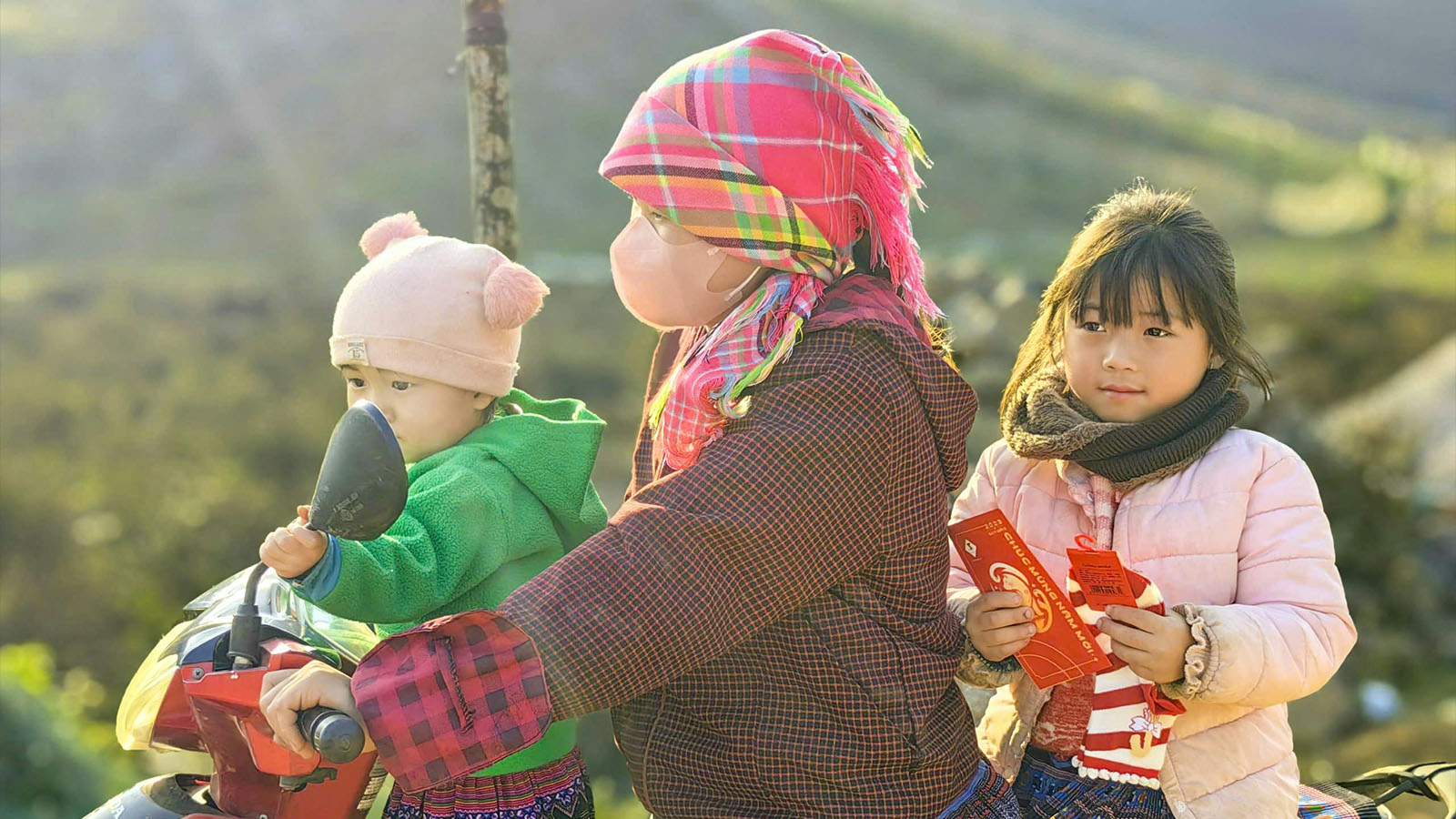




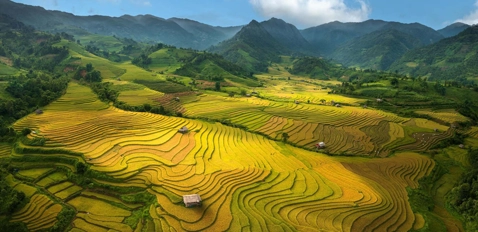

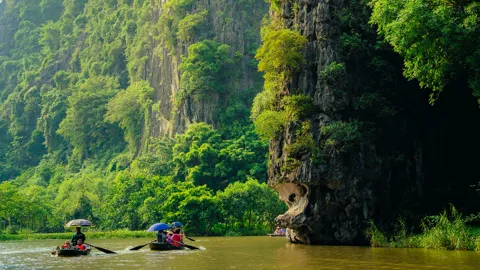



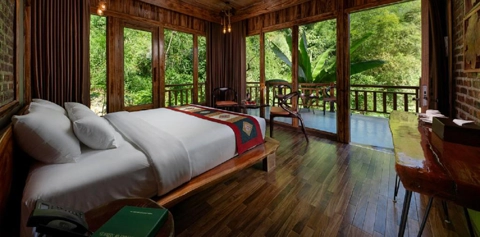


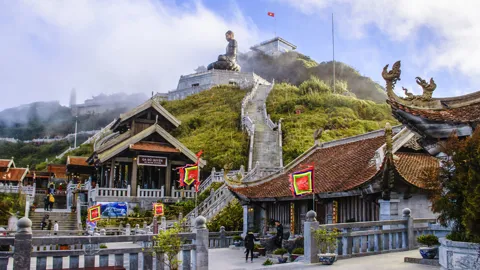






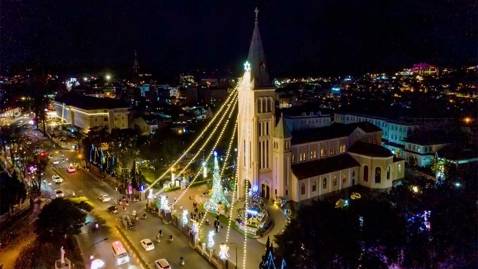













Comment